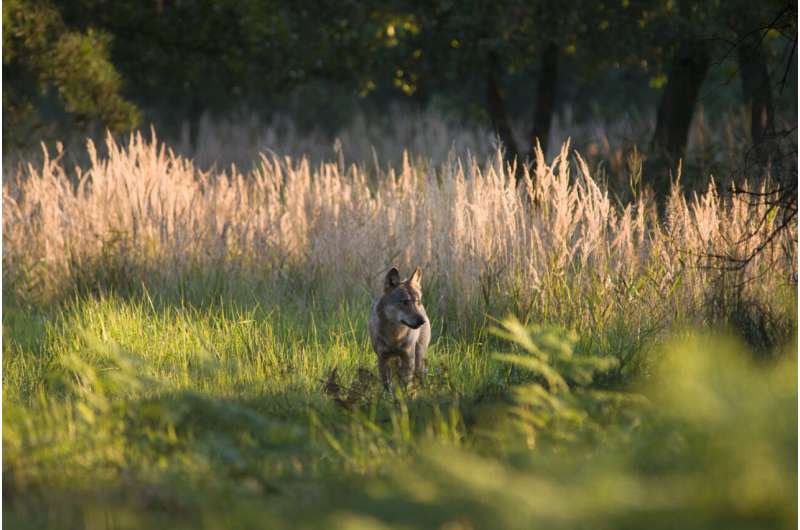New method allows unambiguous identification of wolf hybrids in Europe's forests

Together with a European team, Senckenberg scientists have presented a new method in the scientific journal BMC Genomics that allows the reliable identification of wolf-dog hybrids on the basis of environmental samples such as feces, hair, or saliva residue. The method has a much higher resolution than conventional methods and is expected to serve as a standard procedure in the future, allowing for comparable detection of hybridization rates across Europe.
In the spring of 2000, for the first time since the wolf was eradicated by humans around 1850, wild wolf pups were born once again in Germany in northeastern Saxony close to the Polish border. After the further establishment of this species initially proceeded rather slowly in the following years, a very dynamic range expansion has been observed over the past 10 years or so. "Especially at the beginning of such a recolonization, there is an increased probability that wolves will mate with domestic dogs—simply due to the lack of a choice of sexual partners of their own species," explains Dr. Carsten Nowak of the Senckenberg Research Institute and Natural History Museum Frankfurt and head of the Genomic Biomonitoring program area at the LOEWE Center for Translational Biodiversity Genomics.
Together with a European team from ten countries including e.g. Romania, Slovenia, Italy, and Spain, Nowak's group has now presented a new method that makes it possible to reliably identify such wolf-dog hybrids using environmental samples. "We can identify hybrids using DNA from fecal samples, hair, or from saliva residue of dead prey animals. The new method has a much higher resolution than conventional methods and allows the reliable detection of hybridization events even after several generations," adds Nowak. This is made possible by the targeted selection of locations in the genome where domestic dogs and wolves differ from each other regardless of breed and origin. The new method thus eliminates the need for similarity matches of individual genetic profiles based on reference samples of wolf and dog, according to the recently published study.

Reliable detection of wolf-dog hybrids is complicated by the close relationship between domestic dogs and the large predators—hybrids can be too similar to genetically pure wolves or wolf-like domestic dogs in their external and molecular genetic characteristics. However, recognizing the hybrids produced by wolf-dog matings is important for wolf management: hybrids can produce viable offspring and may spread dog genes into the entire wolf population if they mate again with wolves. Theoretically, it is possible that this will cause an increasing number of dog genes to accumulate in the wolf gene pool over time. "In addition, social acceptance of wolf-dog hybrids living in the wild is low. Therefore, hybrids are usually removed from the wild. Our published method greatly facilitates their reliable identification," says Nowak.
In Germany, only very few hybridization events between wolves and domestic dogs have been registered to date. These occurred in cases where female wolves could not find an unrelated "wolfish" mating partner, such as in Saxony in 2003, or in Thuringia in 2017 and 2019. In such cases, the hybrids are usually ordered to be removed from the wild so that they cannot continue to mate with wolves. Coauthor Berardino Cocchiararo comments: "In our study, we did not find an increased proportion of dog genes in the wolf samples originating from Germany. There are similar findings in other regions of Europe where hybrids are consistently removed and where hardly any stray domestic dogs are present, such as in Scandinavia or the Alpine region."
The new method is already routinely used in German wolf monitoring. In their study, the researchers advocate the standardized use of the method throughout Europe. "This would allow us to identify areas where, for example, feral dogs need to be more closely controlled to ensure ecological separation from wolves. Widespread use of the method to record hybridization rates across Europe would also help us better understand regional differences in wolf-dog admixture," summarizes the study's lead author, Jenni Harmoinen of the University of Oulu in Finland.
No comments:
Post a Comment